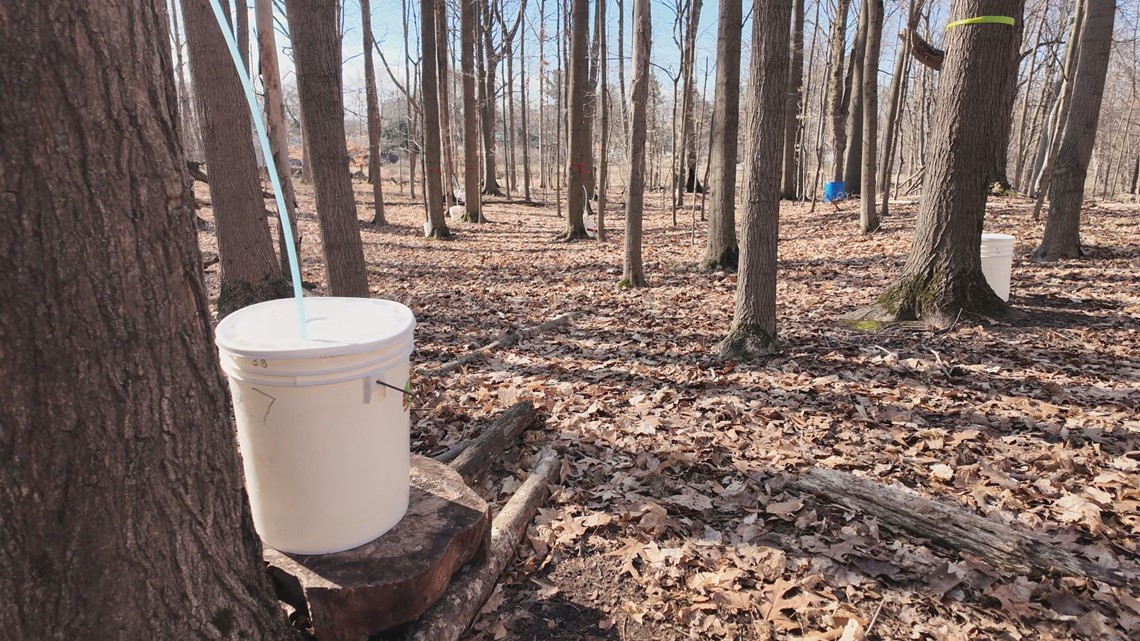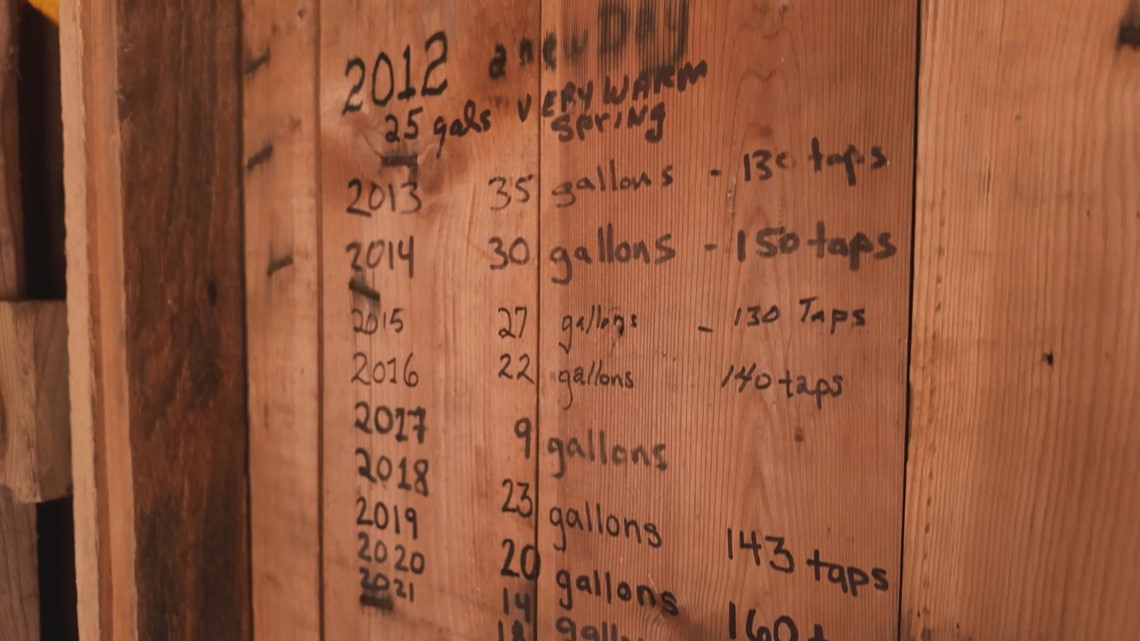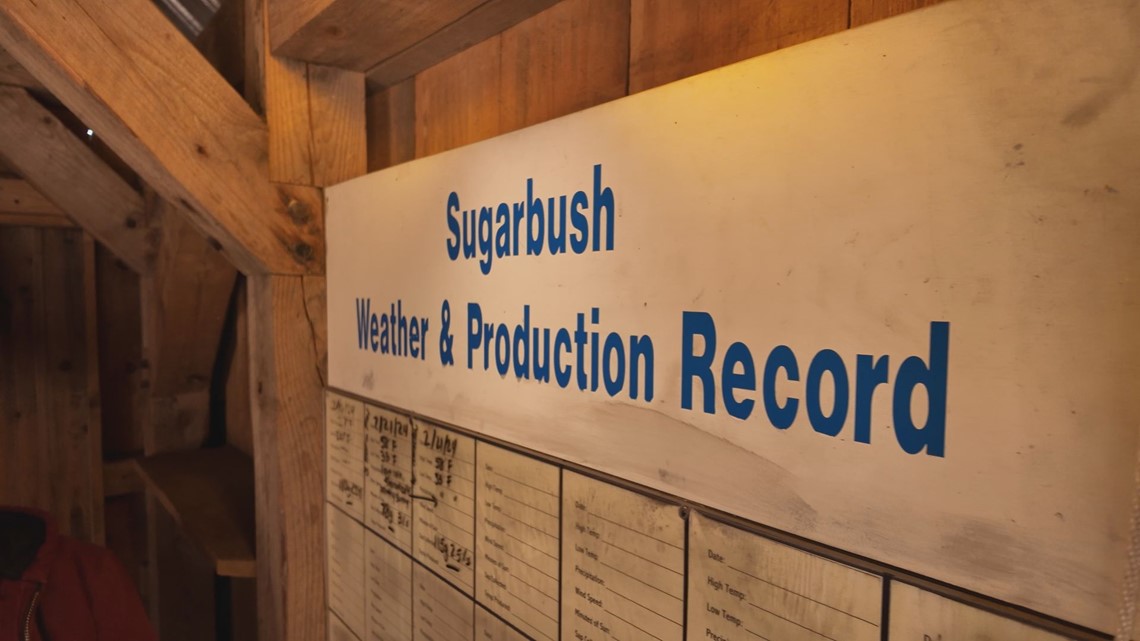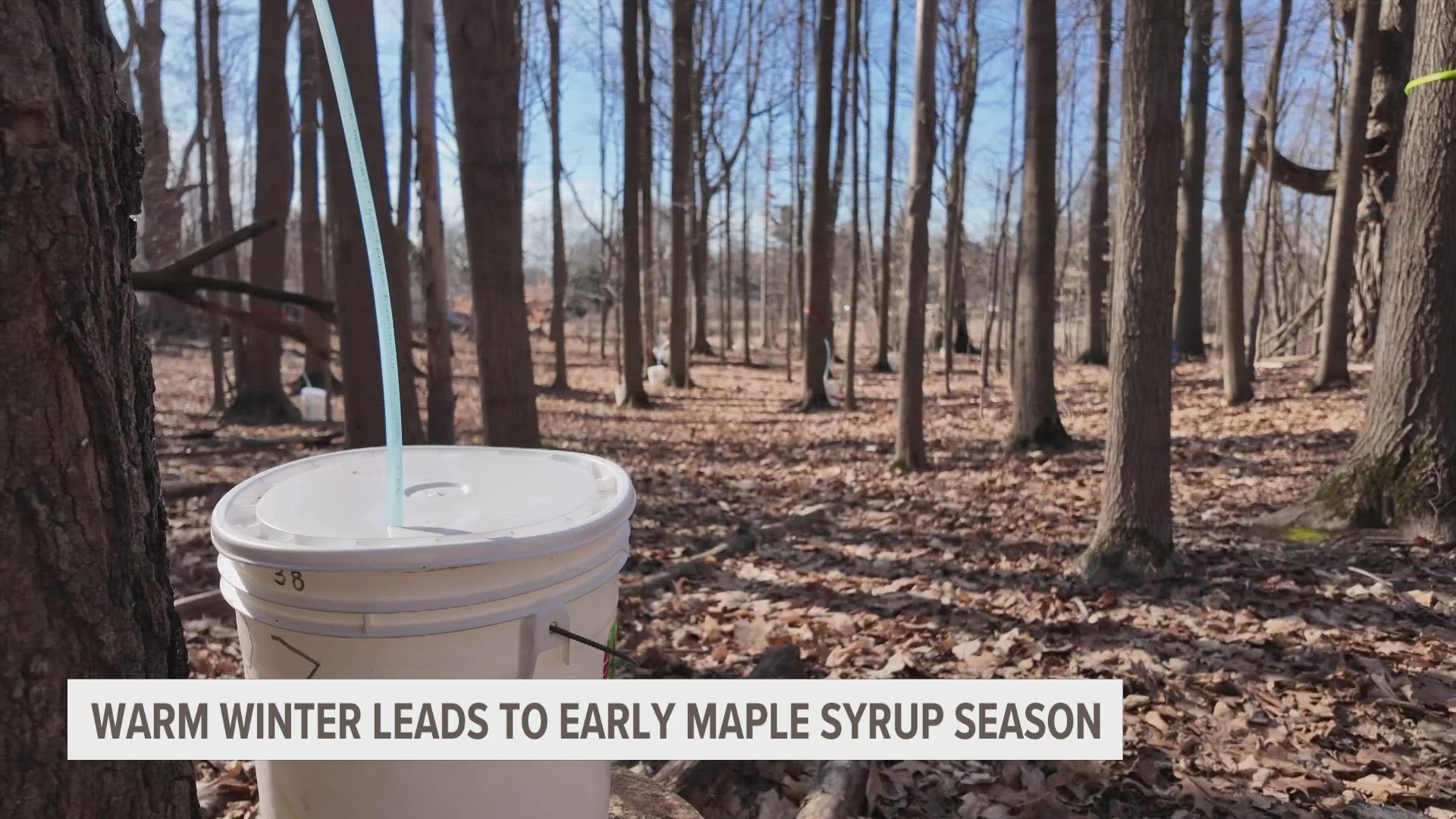GRAND RAPIDS, Michigan — From sap to maple syrup, it’s sugar bush season in West Michigan. Enjoying the sweet treat is a process, however, and tapping maple trees is highly dependent on the weather. The abnormally warm winter has sped up this process, something Blandford Nature Center is seeing firsthand.
“It used to feel more typical, and now it’s feeling more like an ebb and flow,” said Sarah Bass, the Farm Program Specialist at Blandford Nature Center. “Typically for sugar bush season we think of it as really the month of March. As weather has been changing, as climate change has been affecting our area, the sugar bush season has been moving earlier and earlier, it seems every year.”


Blandford Nature Center started tapping maple trees during the middle of February, which is weeks ahead of schedule, and know of others across West Michigan that started even earlier. Cool to cold nights with warmer, sunnier days are key to kickstart sap production, which West Michigan has experienced throughout February. In Grand Rapids, this February will end as one of the warmest on record.
“That creates a pressure change in the tree, which causes the sap to flow up and down the trunk. When you drill a hole in the tree, you're able to capture some of that sap on its way down to the roots,” Bass said.
Approximately 150 maple trees will be tapped across the grounds of the nature center, producing nearly 1,000 gallons of sap. Blandford Nature Center features a sugar house, cooking down the sap to make maple syrup. Sugar bush season ends when maple trees begin to produce little sap or when the sugar content of the sap becomes minimal as trees prepare for spring by budding.
“We need a lot of sap to make a little bit of syrup, it's a 40 to 1 ratio. So you need 40 gallons of sap to make one gallon of syrup. We typically aim to produce about around 20 gallons of syrup here in our sugar house, which means at least 800 gallons of sap,” explained Bass.


The process stays the same year to year but the changing timeline of the season is something Blandford Nature Center and students at Grand Valley State University are studying.
“We measure things from how much sap we get day to day, the temperatures, the sun exposure, the precipitation. We measure all of those things to really see what tapping will look like going forward,” said Bass. “Really seeing how we can be the most sustainable to make sure that our sugar bush season can continue from year to year.”


Sugar bush season at Blandford Nature Center concludes with their annual Sugar Bush Festival, which falls on March 23 this year.
“It's going to be a lot of fun. It's a celebration of the end of the sugar bush season,” said Bass. “We'll have our educators along the trail telling people about the season and its history. We'll have students from the Blandford Environmental Education Program through Grand Rapids Public Schools putting on performances and puppet shows. We'll have food trucks, face painting. It’ll be a lot of fun stuff.”
Prior to the festival, the nature center will be hosting other events revolving around maple syrup production throughout early to mid-March. You can find events at Blandford Nature Center here.
►Make it easy to keep up to date with more stories like this. Download the 13 ON YOUR SIDE app now.
Have a news tip? Email news@13onyourside.com, visit our Facebook page or Twitter. Subscribe to our YouTube channel.
Watch 13 ON YOUR SIDE for free on Roku, Amazon Fire TV Stick, and on your phone.

